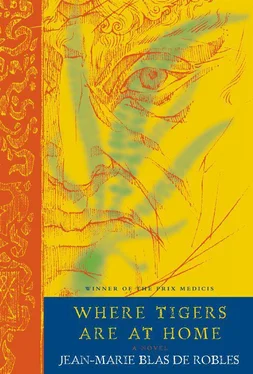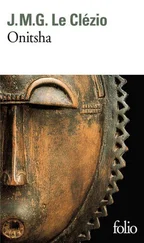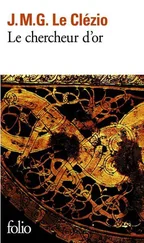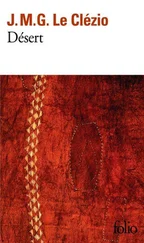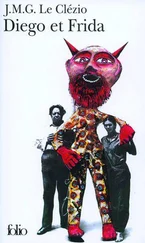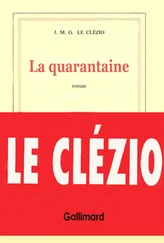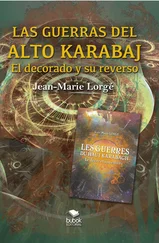In particular Manuel Diaz, Deputy Provincial of the Order in China, mentioned the recent discovery of a stele, which was going to prove of major importance. On this stone, dug up by chance in 1623 in the course of excavations outside the city of Sian Fu, there was a text written in two languages, Syrian and Chinese. According to Diaz, it was an inscription carved in the year 781 after the death of Our Lord that proved that Nestorians had established themselves in China by that date. Kircher was extremely excited by the discovery that Christians, if only Syrians, had been present at such an early date at the heart of the Chinese Empire. He did not think it necessary to explain why this fact seemed so crucial to him but I did not for one second doubt that this simple letter had helped him take another step in the establishment of a doctrine that he was elaborating day by day.
Beside this letter from Manuel Diaz, our correspondence also included missives from Johann Adam Schall von Bell, the official in charge of introducing a calendar at the court of Emperor Ch’ung-chen, from the painter Johann Grueber, from Michal Piotr Boym & other equally famous missionaries, all of which were packed with marvelous information about that country. They were full of things such as magic or metamorphic mountains that could change or even move to another place, of sea dragons & extremely rare animals, of idols possessed by an evil spirit, of monuments & impassable walls. The missionaries also emphasized the power & antiquity of the Chinese Empire. They seemed fascinated by a people so different from ours & yet so advanced in numerous fields while still immersed in the most odious idolatry. The Jesuit who had accompanied the cargo on the boat had managed to keep an ‘ ananas ’ plant alive by giving it his own ration of water; Kircher pronounced the fruit absolutely delicious. The flesh beneath the skin is a little fibrous, but it dissolves entirely into juice in the mouth. Also its taste is so pronounced & so distinctive that those who tried to describe it precisely, finding it impossible to do so without having recourse to comparison, cited everything that was most exquisite about the aubergine, the apricot, the strawberry, the raspberry, the muscat grape & the orange pippin, & having said that, they were forced to admit that in addition it has a certain taste that could not be expressed & that is restricted to it alone.
All that, combined with the perpetual persecution to which the Jesuit missionaries were subjected in their work of propagating the faith, convinced my master that he should go & join them. At the beginning of 1640 he asked the Father General to authorize him to leave for the East to devote himself to the conversion of the Chinese. I was as excited as Athanasius at the idea of devoting my life to God & to the Church, but Providence decided otherwise: Kircher’s request was refused on the express order of the Pope, who did not want to lose such an estimable man at any price. Despite what he admitted to me was a great disappointment, Athanasius submitted to the orders of his superiors with good grace while showing even greater interest than ever in everything he could learn about these distant countries.
At the age of thirty-eight my master seemed at the pinnacle of his powers. He was working on several books at once, mixing all subjects, throwing light on all the disciplines of human knowledge without, for all that, giving up his teaching of mathematics & oriental languages, or forgetting the practical application of his discoveries. Professor, astronomer, physician, geologist & geographer, specialist in languages, archaeologist, Egyptologist, theologian, etc., he was the man all the great minds of his age wanted to talk to & none came to Rome without asking for an audience with him.
The porter was therefore constantly climbing the College stairs to his study to inform him of the presence of this or that visitor. Since this brother was old & decrepit, Kircher thought up a device to spare him such exertions, which were incompatible with his age. He installed a copper pipe going from the porter’s lodge to his desk six floors up; fixed to each end was a metal funnel to amplify their voices. Running down inside the pipe was a wire, which the porter could pull to sound a Javanese gong close to the place where my master was, informing him that the porter wished to speak to him. This invention worked perfectly & the porter thanked Athanasius a thousand times for his generosity. But my master had to remonstrate with him several times: he took such delight in using the machine for trivial reasons that he was disturbing Kircher in his studies.
In 1641 Magnes, sive de Arte Magnetica appeared, a book of nine hundred and sixteen pages in which Kircher returned to the questions he dealt with in his Ars Magnesi , published in Würzburg in 1631, augmenting it with numerous other examples, making it a definitive treatment of the subject. This attraction, which is so clear to see between beings & things, & so similar to the mysterious force present in the lodestone, Kircher attributed to universal magnetism. Once more analogy turned out to be invaluable, the sympathetic power drawing a magnetized needle to the north being merely an illustration of the far greater power uniting the microcosm with the macrocosm, as Hermes the Egyptian had established in far-off times. The irresistible attraction or repulsion that sometimes appears between a man & a woman, the force that guides the bee to the flower or makes the sunflower turn toward the Sun showed the same phenomenon at work on earth & in the skies: the power of God, the absolute magnet of the universe.
“The world,” my master said, “is protected by secret ties & one of them is universal magnetism, which governs both the relationships between men & those that exist between animals, vegetables, the Sun & the Moon. Even minerals are subject to this occult force.”
In this book Kircher also describes the “magnetic oracle,” which he had designed for the Supreme Pontiff & had constructed in advance so as to be able to give it to him at the same time as the description. I was there the first time this curious machine was put into operation, in the presence of Cardinal Barberini, whom my master had asked to come and judge whether such a gift was appropriate.
You must imagine a hexagonal table with, towering up in the center, the reproduction of an Egyptian obelisk containing inside it a very big lodestone. Arranged around the table, one at each side, were six large crystal spheres, each harboring a cherub made of wax & hanging free on a thread. Between these spheres were a dozen smaller ones, constructed on the same model but with figurines representing mythological animals. These twelve figures also had a magnet inside them & each was in balance with the others in relation to the central stone. Finally, different systems such as the Latin alphabet, the zodiac, the elements, the winds & their directions were painted around each of the large spheres. A cursor on the edge of the table made it possible to turn the lodestone in the obelisk to a greater or lesser extent, which disrupted the balance between the figures & made them move until the balance of their magnetism was restored in a different position. The outstretched arms of the “putti,” or cherubs, would then point to a particular constellation or letter of the alphabet, thus answering the questions the operator had asked.
“It’s just a toy,” Kircher told the Cardinal, “but I maintain that a man who is truly in harmony with nature, that is to say at one with the magnetic forces controlling it, could make excellent use of this machine & produce oracles worthy of belief.”
“I can readily believe that,” said Cardinal Barberini, his sparkling eyes showing his interest in my master’s machine, “but it is a dangerous gamble for anyone who tries it; the machine only has to give a nonsensical reply to some question & the one who asked it would be consigned to the herd of the uninitiated, not to say ignoramuses.”
Читать дальше
